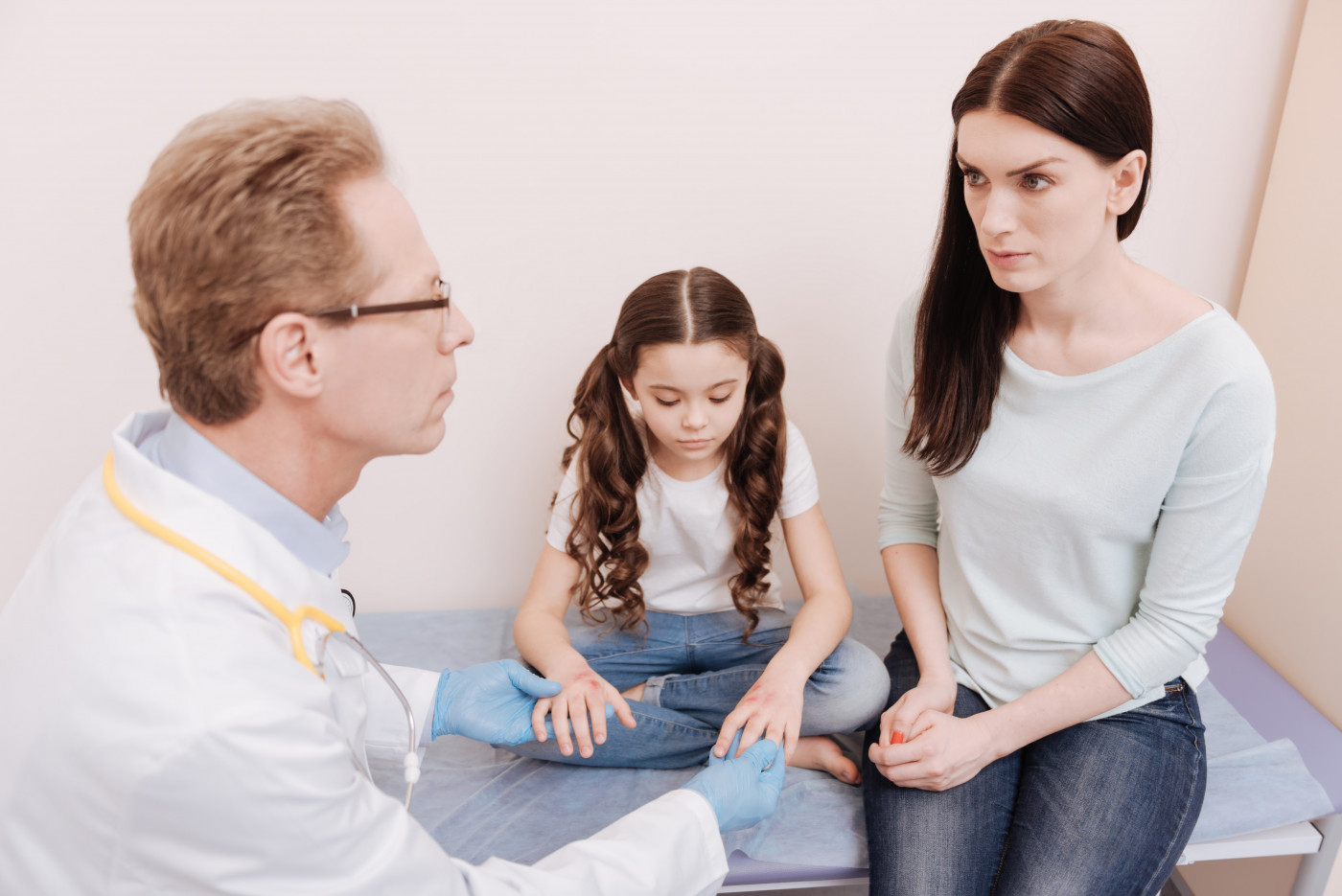FAQs About Hemiepiphysiodesis for XLH

Hemiepiphysiodesis or guided growth is a surgical technique used to gradually correct angular deformities, such as bow legs, in the still-growing bones of children with X-linked hypophosphatemia (XLH). During a minimally invasive procedure, surgeons apply a plate to a crooked bone, allowing it to straighten as the child grows.
Here are some frequently asked questions about hemiepiphysiodesis.
How does hemiepiphysiodesis work?
A surgeon will attach what’s called a guided growth plate, about the size of a paper clip, to one side of the affected bone. Two screws, one on each side of the growth plate, are used to hold it in place. As the child grows, the side of the bone held by the plate will grow more slowly than the other side, so that the bone gradually straightens.
In children, the growth plate of long bones like the tibia and fibula in the leg consists of cartilage to allow for growth. When a child is fully grown, the cartilage is replaced by bone.
What are the advantages of hemiepiphysiodesis?
Beyond its effectiveness, the surgery is less painful and costly and carries fewer risks than corrective osteotomy, a surgery that cuts bone to restore normal alignment.
What happens on the day of hemiepiphysiodesis?
On the day of the roughly hour-long procedure, you and your child will likely meet with a physical therapist who will decide what assistive devices — a walker or crutches, for example — will best suit your child’s needs. The therapist will teach your child how to use the device.
Surgery is usually outpatient, meaning your child can go home the same day. Still, they will receive general anesthesia so as not to experience any pain during the procedure.
What happens after the surgery?
Following surgery, your child will have a small bandage covering a roughly one-inch incision. Doctors will ask them to walk as soon as possible. As no bone is cut, there’s no need for a post-procedure cast or brace. As soon as your child is comfortable walking without assistance, he or she may stop using the walker or crutches.
It may be helpful to have pillows or blankets in the car for the ride home to help with comfort and positioning.
After 48 hours, your child can bathe or shower, taking care to make sure the waterproof dressing remains in place. A follow-up doctor’s appointment will usually take place a week or two after the surgery.
Will my child be in pain?
Pain control will be key, particularly the first week. Over-the-counter pain relief medications may suffice in controlling discomfort. If not, you could request a doctor’s prescription for stronger pain medicine.
To prevent or reduce swelling, use pillows to elevate the leg that had the procedure. Placing an ice pack over the incision can also minimize discomfort.
Physical movement may be uncomfortable for the first few weeks, but the discomfort will ease with time. Encouraging your child to move, bend, and walk is important for their recovery, including an end to any discomfort.
Could there be any complications?
Call your doctor if there is swelling or redness at the incision site, your child has a fever of 101 F or higher (about 38.3 C), or there is increasing site drainage, bleeding, or pain.
How soon can progress be expected?
Be mindful that your child will not wake from surgery with a straight bone. The resolution takes about a year, depending on how fast your child is growing and the degree of their deformity.
Early on, a physical therapist may help get your child moving and back to their normal activities, a resumption that usually takes two to three weeks. As the leg straightens, the doctor will continue to monitor your child until the deformity disappears. They then remove the growth plate during another outpatient surgery.
It’s important not to miss scheduled follow-up visits. These will allow the doctor to monitor how well the deformity is being corrected and when the plate should be removed.
Can limb deformity recur?
There is a risk of deformity returning with hemiepiphysiodesis. One study reported this risk to be high in children with XLH. As such, it may be better to wait until your child is closer to the end of his or her skeletal growth, generally puberty, to have the procedure.
Last updated: Jan. 12, 2021
***
XLH News Today is strictly a news and information website about the disease. It does not provide medical advice, diagnosis, or treatment. This content is not intended to be a substitute for professional medical advice, diagnosis, or treatment. Always seek the advice of your physician or other qualified health providers with any questions you may have regarding a medical condition. Never disregard professional medical advice or delay in seeking it because of something you have read on this website.






